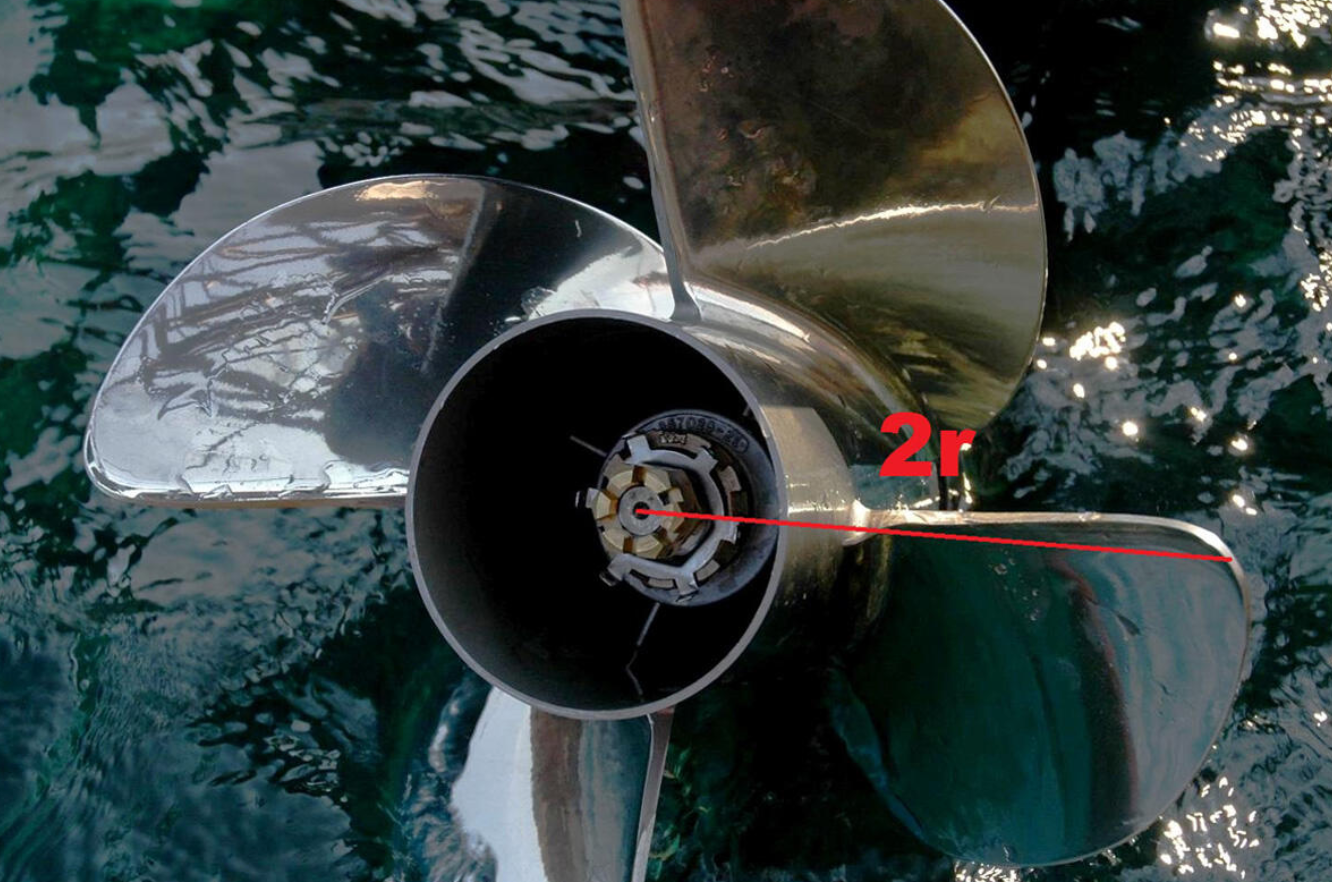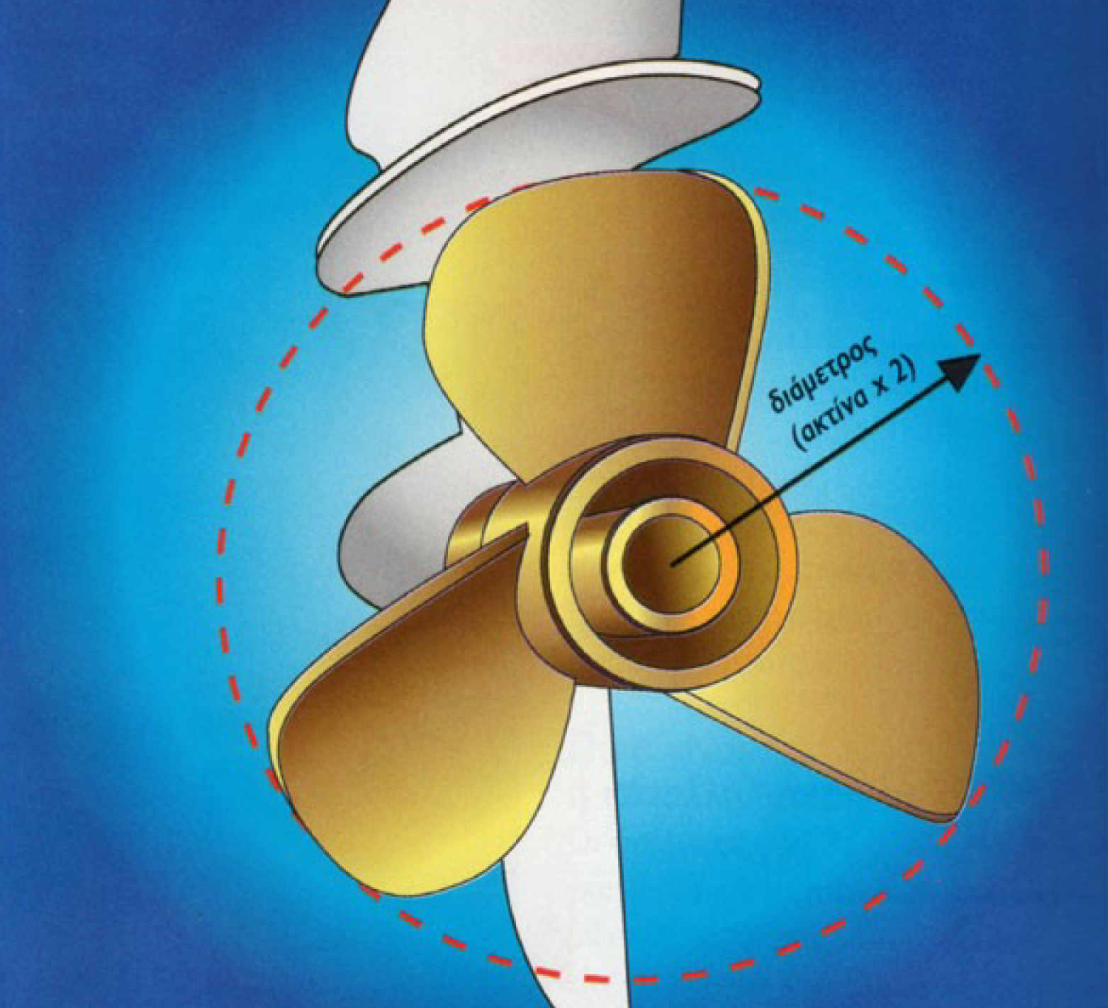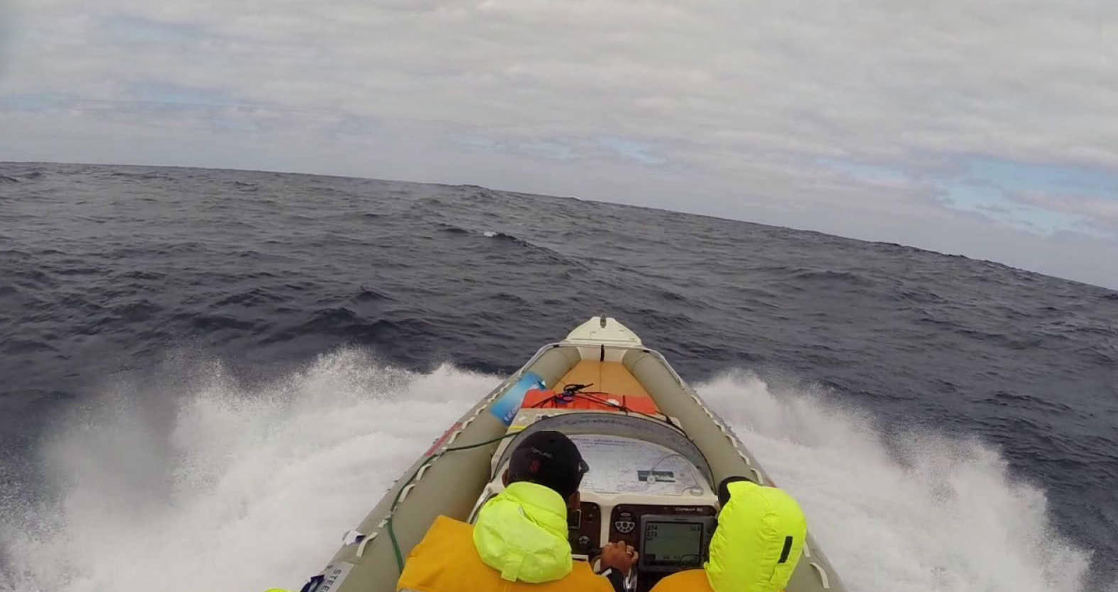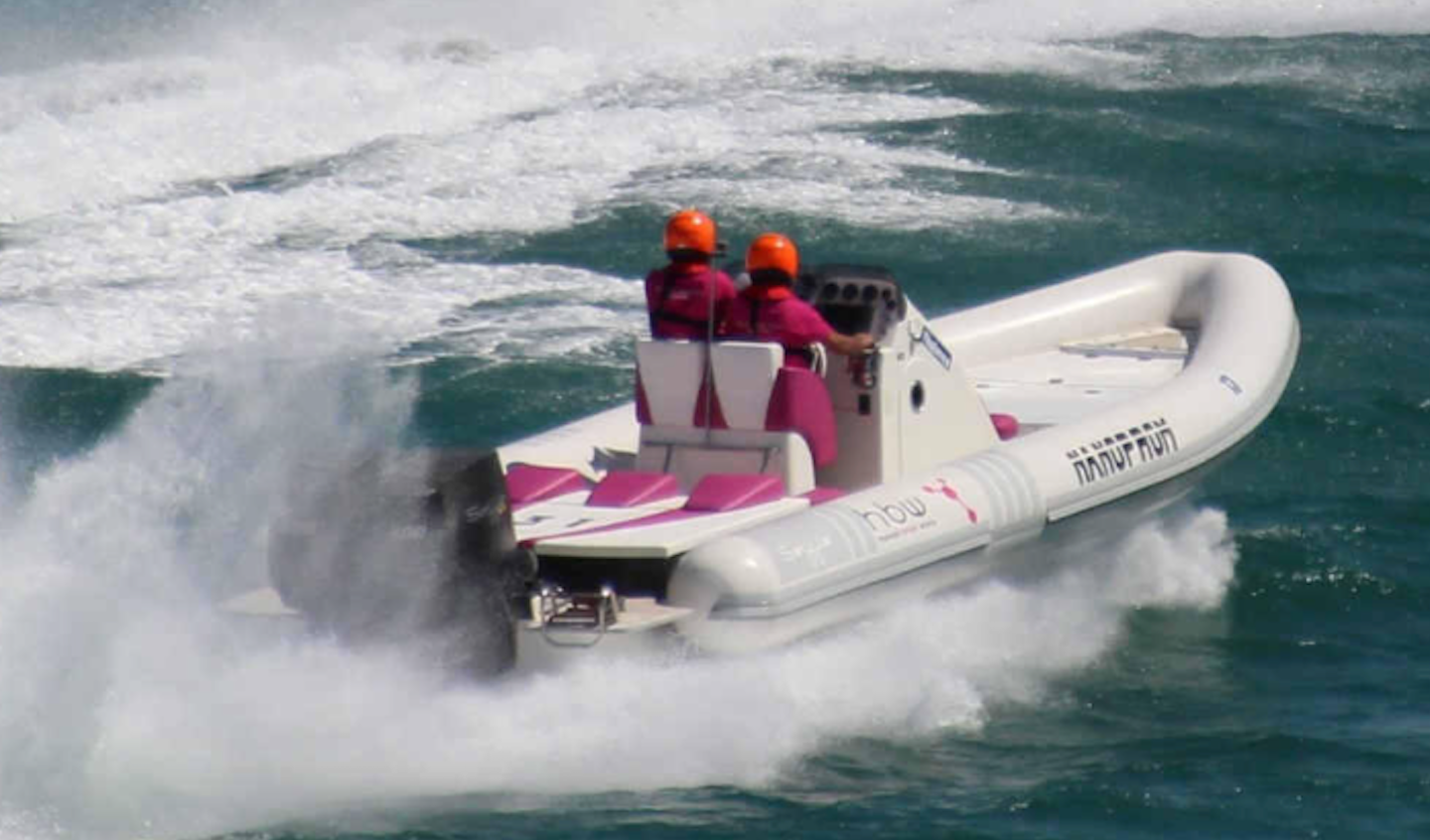The Importance of Propeller Diameter: How it Impacts Performance

The diameter and pitch are the fundamental characteristics of a propeller that determine its size. Besides the brand and model name, they are the ''identity'' of the propeller and are usually stamped on its hub.
The numbers 16” x 23” (40.64 cm x 58.42 cm) are presented in inches. The first number refers to diameter and the second one to the pitch of the propeller.
Diameter Definition
The diameter of a propeller is basically the circle that the blade tips make when the prop rotates. This diameter is easy to be determined. Measure the distance from the center of the hub to the tip of one blade and multiply it times two.

How Propeller Blades Work
- They entrap a certain amount of water and push it rearward.
- The more surface area blades have, the more water is pushed back.
- The more water they push astern of the hull, the greater the thrust generated.
- A larger diameter produces more thrust and, in most cases, more efficiency.
Benefits of a Large-Diameter Propeller
- It gets the boat on plane more easily and more quickly because the large diameter overcomes the resistance from the boat and loads.
- It keeps the boat on plane at a lower rpm, which is important when traveling in rough seas. The added surface area of the propeller's blades overcomes the additional resistance from the big waves and strong wind. It takes advantage of the engine’s torque and gives the captain more control in bad weather.
- We travel faster at low and medium engines rpm, because the large diameter propeller has less slippage in these revolutions related to a smaller diameter. This results in higher cruising speeds and lower fuel consumption at low and medium speeds in most cases. In this range of speeds the engine usually operates at 90%.
- Additionally, the boat responds more efficiently in slow-speed maneuvers in confined spaces around docks because we have better thrust at low rpm.

Downsides of a Large-Diameter Propeller
- It increases the load on the engine and related components because the larger blades create greater resistance. The engine works harder to spin the prop.
- It has greater hydrodynamic resistances at high speeds.
- It reduces top speed, since the drag at wide-open throttle is increased. The large-diameter propeller blades have more surface area. In addition, the lower unit’s gearcase is bigger to accommodate the larger gears that are required to support the torque generated by the large-diameter propeller.
Summary
As a general conclusion, the large-diameter propeller is more efficient at low and medium rpm and it pushes the boat faster at high speed. When our goal is to achieve high speeds — more than 45 mph (40 knots) — it has less efficiency because more surface area is wet and causes more drag.
Generally, deep-V boats with more hull resistance or overloaded boats will perform better with large diameter propellers. In these cases the top speed is not the goal. To the contrary, boats with lower-resistance hulls not intended for heavy loads perform better with smaller-diameter propellers. This is due to the reduced hydrodynamic resistance of the smaller blades and gearcase.

If the goal is to cruise at medium rpm or we usually have our boat loaded, then a large diameter propeller is the best choice. On the other hand, if we are interested in higher speeds, a smaller-diameter propeller is the best choice.
For all-around handling and heavy-weather performance it’s better to use a large diameter propeller and we must accept the reduced top speed. We will have more thrust at cruise and lower rpm where it’s needed.